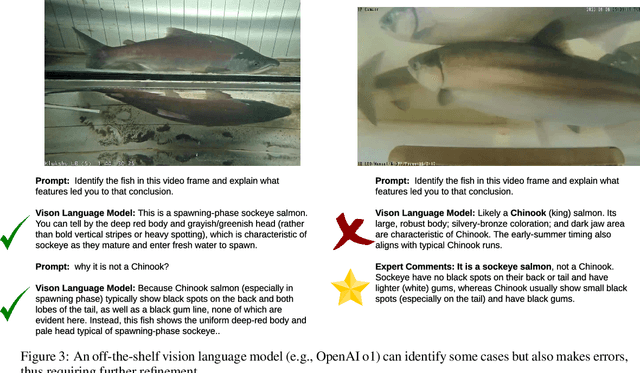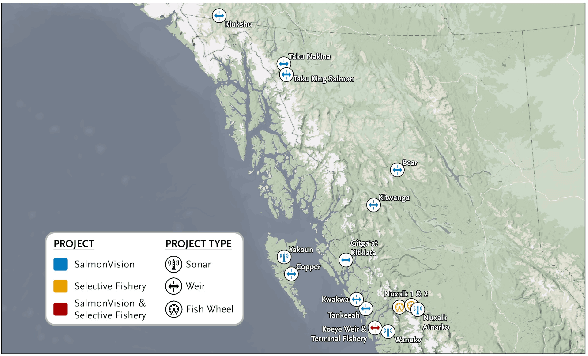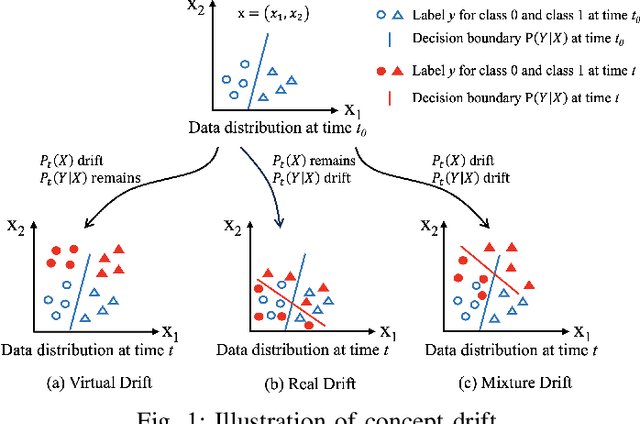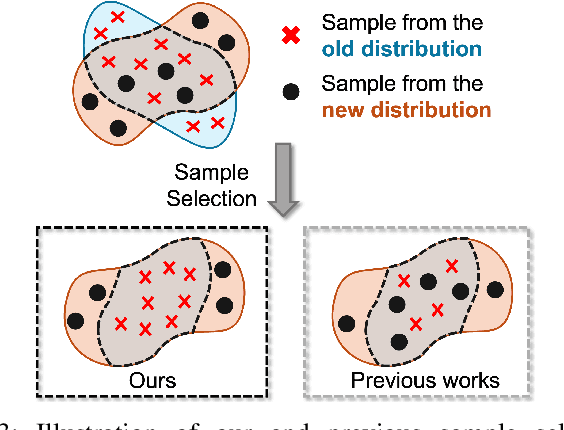Edith C. H. Ngai
NoteIt: A System Converting Instructional Videos to Interactable Notes Through Multimodal Video Understanding
Aug 20, 2025



Abstract:Users often take notes for instructional videos to access key knowledge later without revisiting long videos. Automated note generation tools enable users to obtain informative notes efficiently. However, notes generated by existing research or off-the-shelf tools fail to preserve the information conveyed in the original videos comprehensively, nor can they satisfy users' expectations for diverse presentation formats and interactive features when using notes digitally. In this work, we present NoteIt, a system, which automatically converts instructional videos to interactable notes using a novel pipeline that faithfully extracts hierarchical structure and multimodal key information from videos. With NoteIt's interface, users can interact with the system to further customize the content and presentation formats of the notes according to their preferences. We conducted both a technical evaluation and a comparison user study (N=36). The solid performance in objective metrics and the positive user feedback demonstrated the effectiveness of the pipeline and the overall usability of NoteIt. Project website: https://zhaorunning.github.io/NoteIt/
RealFactBench: A Benchmark for Evaluating Large Language Models in Real-World Fact-Checking
Jun 14, 2025Abstract:Large Language Models (LLMs) hold significant potential for advancing fact-checking by leveraging their capabilities in reasoning, evidence retrieval, and explanation generation. However, existing benchmarks fail to comprehensively evaluate LLMs and Multimodal Large Language Models (MLLMs) in realistic misinformation scenarios. To bridge this gap, we introduce RealFactBench, a comprehensive benchmark designed to assess the fact-checking capabilities of LLMs and MLLMs across diverse real-world tasks, including Knowledge Validation, Rumor Detection, and Event Verification. RealFactBench consists of 6K high-quality claims drawn from authoritative sources, encompassing multimodal content and diverse domains. Our evaluation framework further introduces the Unknown Rate (UnR) metric, enabling a more nuanced assessment of models' ability to handle uncertainty and balance between over-conservatism and over-confidence. Extensive experiments on 7 representative LLMs and 4 MLLMs reveal their limitations in real-world fact-checking and offer valuable insights for further research. RealFactBench is publicly available at https://github.com/kalendsyang/RealFactBench.git.
MDVT: Enhancing Multimodal Recommendation with Model-Agnostic Multimodal-Driven Virtual Triplets
May 22, 2025Abstract:The data sparsity problem significantly hinders the performance of recommender systems, as traditional models rely on limited historical interactions to learn user preferences and item properties. While incorporating multimodal information can explicitly represent these preferences and properties, existing works often use it only as side information, failing to fully leverage its potential. In this paper, we propose MDVT, a model-agnostic approach that constructs multimodal-driven virtual triplets to provide valuable supervision signals, effectively mitigating the data sparsity problem in multimodal recommendation systems. To ensure high-quality virtual triplets, we introduce three tailored warm-up threshold strategies: static, dynamic, and hybrid. The static warm-up threshold strategy exhaustively searches for the optimal number of warm-up epochs but is time-consuming and computationally intensive. The dynamic warm-up threshold strategy adjusts the warm-up period based on loss trends, improving efficiency but potentially missing optimal performance. The hybrid strategy combines both, using the dynamic strategy to find the approximate optimal number of warm-up epochs and then refining it with the static strategy in a narrow hyper-parameter space. Once the warm-up threshold is satisfied, the virtual triplets are used for joint model optimization by our enhanced pair-wise loss function without causing significant gradient skew. Extensive experiments on multiple real-world datasets demonstrate that integrating MDVT into advanced multimodal recommendation models effectively alleviates the data sparsity problem and improves recommendation performance, particularly in sparse data scenarios.
Exploring Multimodal Foundation AI and Expert-in-the-Loop for Sustainable Management of Wild Salmon Fisheries in Indigenous Rivers
May 10, 2025



Abstract:Wild salmon are essential to the ecological, economic, and cultural sustainability of the North Pacific Rim. Yet climate variability, habitat loss, and data limitations in remote ecosystems that lack basic infrastructure support pose significant challenges to effective fisheries management. This project explores the integration of multimodal foundation AI and expert-in-the-loop frameworks to enhance wild salmon monitoring and sustainable fisheries management in Indigenous rivers across Pacific Northwest. By leveraging video and sonar-based monitoring, we develop AI-powered tools for automated species identification, counting, and length measurement, reducing manual effort, expediting delivery of results, and improving decision-making accuracy. Expert validation and active learning frameworks ensure ecological relevance while reducing annotation burdens. To address unique technical and societal challenges, we bring together a cross-domain, interdisciplinary team of university researchers, fisheries biologists, Indigenous stewardship practitioners, government agencies, and conservation organizations. Through these collaborations, our research fosters ethical AI co-development, open data sharing, and culturally informed fisheries management.
COHESION: Composite Graph Convolutional Network with Dual-Stage Fusion for Multimodal Recommendation
Apr 06, 2025



Abstract:Recent works in multimodal recommendations, which leverage diverse modal information to address data sparsity and enhance recommendation accuracy, have garnered considerable interest. Two key processes in multimodal recommendations are modality fusion and representation learning. Previous approaches in modality fusion often employ simplistic attentive or pre-defined strategies at early or late stages, failing to effectively handle irrelevant information among modalities. In representation learning, prior research has constructed heterogeneous and homogeneous graph structures encapsulating user-item, user-user, and item-item relationships to better capture user interests and item profiles. Modality fusion and representation learning were considered as two independent processes in previous work. In this paper, we reveal that these two processes are complementary and can support each other. Specifically, powerful representation learning enhances modality fusion, while effective fusion improves representation quality. Stemming from these two processes, we introduce a COmposite grapH convolutional nEtwork with dual-stage fuSION for the multimodal recommendation, named COHESION. Specifically, it introduces a dual-stage fusion strategy to reduce the impact of irrelevant information, refining all modalities using ID embedding in the early stage and fusing their representations at the late stage. It also proposes a composite graph convolutional network that utilizes user-item, user-user, and item-item graphs to extract heterogeneous and homogeneous latent relationships within users and items. Besides, it introduces a novel adaptive optimization to ensure balanced and reasonable representations across modalities. Extensive experiments on three widely used datasets demonstrate the significant superiority of COHESION over various competitive baselines.
Gumiho: A Hybrid Architecture to Prioritize Early Tokens in Speculative Decoding
Mar 13, 2025Abstract:Speculative decoding (SPD) aims to accelerate the auto-regressive token generation process of a target Large Language Model (LLM). Some approaches employ a draft model with multiple heads to predict a sequence of future tokens, where each head handles a token in the sequence. The target LLM verifies the predicted sequence and accepts aligned tokens, enabling efficient multi-token generation. However, existing methods assume that all tokens within a sequence are equally important, employing identical head structures and relying on a single-generation paradigm, either serial or parallel. To this end, we theoretically demonstrate that initial tokens in the draft sequence are more important than later ones. Building on this insight, we propose Gumiho, a hybrid model combining serial and parallel heads. Specifically, given the critical importance of early tokens, we employ a sophisticated Transformer architecture for the early draft heads in a serial configuration to improve accuracy. For later tokens, we utilize multiple lightweight MLP heads operating in parallel to enhance efficiency. By allocating more advanced model structures and longer running times to the early heads, Gumiho achieves improved overall performance. The experimental results demonstrate that our method outperforms existing approaches, fully validating its effectiveness.
Learning Temporal Invariance in Android Malware Detectors
Feb 07, 2025



Abstract:Learning-based Android malware detectors degrade over time due to natural distribution drift caused by malware variants and new families. This paper systematically investigates the challenges classifiers trained with empirical risk minimization (ERM) face against such distribution shifts and attributes their shortcomings to their inability to learn stable discriminative features. Invariant learning theory offers a promising solution by encouraging models to generate stable representations crossing environments that expose the instability of the training set. However, the lack of prior environment labels, the diversity of drift factors, and low-quality representations caused by diverse families make this task challenging. To address these issues, we propose TIF, the first temporal invariant training framework for malware detection, which aims to enhance the ability of detectors to learn stable representations across time. TIF organizes environments based on application observation dates to reveal temporal drift, integrating specialized multi-proxy contrastive learning and invariant gradient alignment to generate and align environments with high-quality, stable representations. TIF can be seamlessly integrated into any learning-based detector. Experiments on a decade-long dataset show that TIF excels, particularly in early deployment stages, addressing real-world needs and outperforming state-of-the-art methods.
Continual Learning with Strategic Selection and Forgetting for Network Intrusion Detection
Dec 20, 2024



Abstract:Intrusion Detection Systems (IDS) are crucial for safeguarding digital infrastructure. In dynamic network environments, both threat landscapes and normal operational behaviors are constantly changing, resulting in concept drift. While continuous learning mitigates the adverse effects of concept drift, insufficient attention to drift patterns and excessive preservation of outdated knowledge can still hinder the IDS's adaptability. In this paper, we propose SSF (Strategic Selection and Forgetting), a novel continual learning method for IDS, providing continuous model updates with a constantly refreshed memory buffer. Our approach features a strategic sample selection algorithm to select representative new samples and a strategic forgetting mechanism to drop outdated samples. The proposed strategic sample selection algorithm prioritizes new samples that cause the `drifted' pattern, enabling the model to better understand the evolving landscape. Additionally, we introduce strategic forgetting upon detecting significant drift by discarding outdated samples to free up memory, allowing the incorporation of more recent data. SSF captures evolving patterns effectively and ensures the model is aligned with the change of data patterns, significantly enhancing the IDS's adaptability to concept drift. The state-of-the-art performance of SSF on NSL-KDD and UNSW-NB15 datasets demonstrates its superior adaptability to concept drift for network intrusion detection.
USpeech: Ultrasound-Enhanced Speech with Minimal Human Effort via Cross-Modal Synthesis
Oct 29, 2024



Abstract:Speech enhancement is crucial in human-computer interaction, especially for ubiquitous devices. Ultrasound-based speech enhancement has emerged as an attractive choice because of its superior ubiquity and performance. However, inevitable interference from unexpected and unintended sources during audio-ultrasound data acquisition makes existing solutions rely heavily on human effort for data collection and processing. This leads to significant data scarcity that limits the full potential of ultrasound-based speech enhancement. To address this, we propose USpeech, a cross-modal ultrasound synthesis framework for speech enhancement with minimal human effort. At its core is a two-stage framework that establishes correspondence between visual and ultrasonic modalities by leveraging audible audio as a bridge. This approach overcomes challenges from the lack of paired video-ultrasound datasets and the inherent heterogeneity between video and ultrasound data. Our framework incorporates contrastive video-audio pre-training to project modalities into a shared semantic space and employs an audio-ultrasound encoder-decoder for ultrasound synthesis. We then present a speech enhancement network that enhances speech in the time-frequency domain and recovers the clean speech waveform via a neural vocoder. Comprehensive experiments show USpeech achieves remarkable performance using synthetic ultrasound data comparable to physical data, significantly outperforming state-of-the-art ultrasound-based speech enhancement baselines. USpeech is open-sourced at https://github.com/aiot-lab/USpeech/.
BF-Meta: Secure Blockchain-enhanced Privacy-preserving Federated Learning for Metaverse
Oct 29, 2024



Abstract:The metaverse, emerging as a revolutionary platform for social and economic activities, provides various virtual services while posing security and privacy challenges. Wearable devices serve as bridges between the real world and the metaverse. To provide intelligent services without revealing users' privacy in the metaverse, leveraging federated learning (FL) to train models on local wearable devices is a promising solution. However, centralized model aggregation in traditional FL may suffer from external attacks, resulting in a single point of failure. Furthermore, the absence of incentive mechanisms may weaken users' participation during FL training, leading to degraded performance of the trained model and reduced quality of intelligent services. In this paper, we propose BF-Meta, a secure blockchain-empowered FL framework with decentralized model aggregation, to mitigate the negative influence of malicious users and provide secure virtual services in the metaverse. In addition, we design an incentive mechanism to give feedback to users based on their behaviors. Experiments conducted on five datasets demonstrate the effectiveness and applicability of BF-Meta.
 Add to Chrome
Add to Chrome Add to Firefox
Add to Firefox Add to Edge
Add to Edge